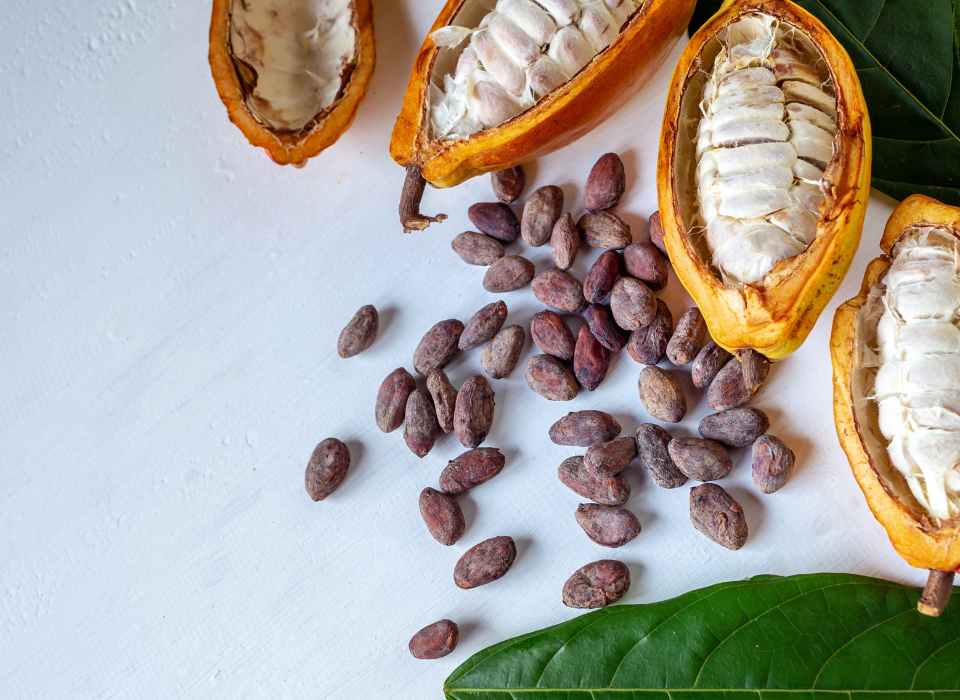Chocolate is undoubtedly one of the world's most popular sweets, but its production has a significant impact on the environment. From cocoa cultivation to processing to the final product, every stage of the manufacturing process leaves its ecological footprint.
Reason enough to take a closer look at the challenges and possible solutions.
1. Deforestation and loss of biodiversity
The cultivation of cocoa is often associated with the deforestation of tropical forests. Forests are cleared to create new areas for cultivation, which not only leads to the destruction of important habitats, but also significantly reduces biodiversity. This deforestation also contributes to the release of carbon dioxide stored in the forest soil and trees, thus exacerbating climate change.
2. Soil degradation and erosion
The intensive use of soils for cocoa cultivation often leads to soil degradation. Monocultures, as are common in many traditional cocoa plantations, deprive the soil of important nutrients, which in the long term leads to a deterioration in soil quality. Without adequate soil protection measures, significant erosion problems can arise, further affecting agricultural productivity.
3. High water consumption
Irrigation of cocoa plantations requires large amounts of water, especially in regions that already suffer from water scarcity. While cultivation in humid tropical areas requires less artificial irrigation, in other areas a significant amount of water is needed to supply the plants. This water consumption can place a heavy strain on local water resources and lead to conflicts with other water users.
4. Use of pesticides and fertilizers
The use of chemical pesticides and fertilizers is widespread in many cocoa plantations. These chemicals can leach into the environment and contaminate water sources, causing negative impacts on human and animal health. Pesticides can also decimate beneficial insect and pollinator populations, which in turn affects biodiversity and plantation productivity.
5. Greenhouse gas emissions
The processing of cocoa into chocolate is energy-intensive and contributes to the emission of greenhouse gases. From roasting the beans to conching and tempering to packaging and transporting the finished products, emissions are generated that contribute to climate change. In particular, transporting the products over long distances can release significant amounts of CO₂.
6. Packaging waste
Another environmental aspect is the packaging waste generated by chocolate consumption. Many chocolate products are packaged in plastic or aluminum foil, which is difficult to recycle and often ends up in the environment. This contributes to the growing problem of plastic waste and has a negative impact on ecosystems.
Conclusion: Dynamic cultivation methods and sustainable packaging materials for more environmental protection
The production of chocolate has a significant impact on the environment, from deforestation and soil degradation to high water consumption and the use of chemicals, greenhouse gas emissions and packaging waste. To reduce these negative impacts, it is important to promote sustainable farming methods, minimize the use of pesticides and fertilizers, and use environmentally friendly packaging. Consumers can help protect the environment and support more sustainable chocolate production by purchasing fairly traded, organically grown chocolate.



